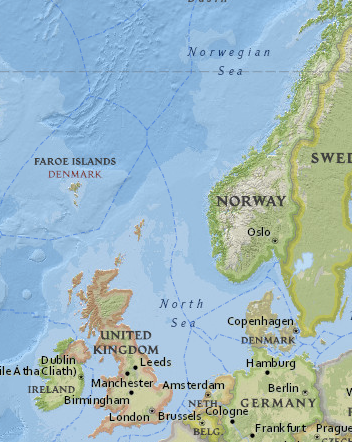Hardware Setup
- Raspberry Pi
- dAISy AIS receiver
- VHF antenna
Software Setup
Follow the quick links on the map:

AIS stands for Automatic Identification System and provides information about a marine vessel via a radio transmitter. Its primary purpose is to let ships identify each other and prevent collisions. It broadcasts its IMO number (i.e. a license plate), the ship location, speed, draught, where it is going, etc.
Most ships above a certain size will have an AIS transmitter. It broadcasts on VHF 162MHz.
Vessel traffic services listen passively on this frequency and provide the data to customers like ship owners and analysts. Most services run hundreds of stations worldwide from terrestrial sources and some even employ a fleet of satellites to get coverage even in remote areas without terrestrial coverage.
Running my own stationAIS data is usually hard to get or you need to pay for it. AIShub.net supplies AIS data for free and is the primary data source for rigtracker. To receive the data stream from this network you need to contribute yourself to it.
You can do that by running your own AIS receiver station. Total cost of the entire setup is less than $150.
AIShub.net allows the free usage of the AIS data for commercial and non-commercial purposes but provide no uptime guarantee etc. The coverage varies due to voluntary user contribution and is usually limited to near-shore terrestrial receiver range with some exceptions. For the purposes of the rigtracker it is still perfect.
Setting up your own station is relatively straight forward. You need a place for an antenna, a water-proof place for the AIS receiver and the Raspberry Pi and a power supply nearby.
In my case all of the equipment lives on my balcony with the antenna attached next to my flower pots and an old water-proof box in which I've drilled some holes to get the antenna cable and power supply in. A bag with desiccant keeps the entire setup dry.
Lessons learnedWhat I've learned from running my own station for some time now.
- Height beats proximity. Your elevation above sea determines your range much more than your proximity to the sea.
- A 3dB low-gain antenna is sufficient to get decent coverage. High-gain antennas, with 6 or even 9dB, only make sense if your antenna has direct line of sight to the horizons. The radiation patterns of high-gain antennas will effectively blind your station to ships in close proximity if there is varying topography around you.
- Weather and cloud cover is a much bigger factor on range than I ever anticipated.
- Keep a bag with desiccant next to the electronics.